Podman & Pod Deployment
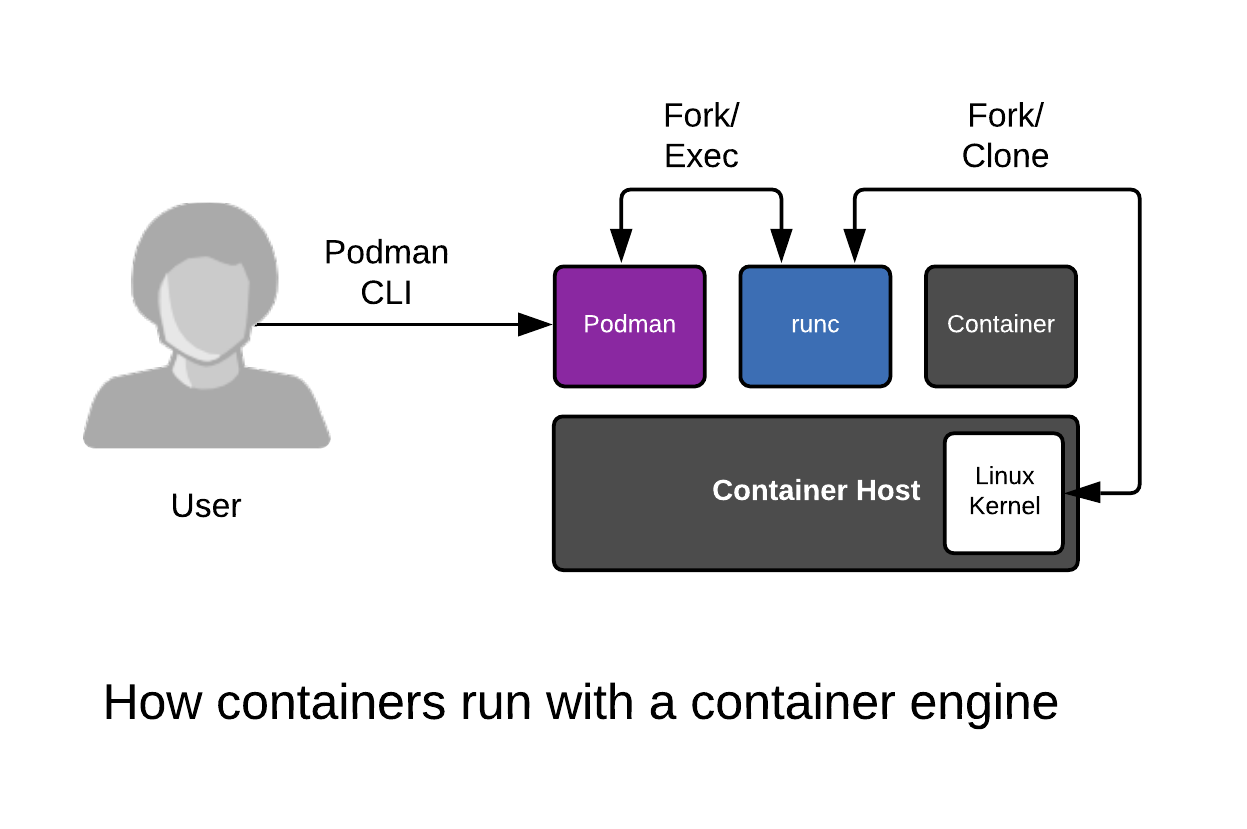
Create project folder
mkdir Podman
cd Podman
Create Vagrantfile
-
install podman
-
open port 80, 8080, 6379 in firewall
-
cpu 2 ram 4096
# -*- mode: ruby -*-
# vi: set ft=ruby :
$script=<<-SCRIPT
sed -i 's/PasswordAuthentication no/PasswordAuthentication yes/g' /etc/ssh/sshd_config
sudo systemctl restart sshd.service
sudo firewall-cmd --state
sudo systemctl --enable --now firewalld
sudo firewall-cmd --permanent --add-port=80/tcp
sudo firewall-cmd --permanent --add-port=8080/tcp
sudo firewall-cmd --permanent --add-port=6379/tcp
sudo firewall-cmd --reload
sudo firewall-cmd --list-all
sudo dnf update -y
sudo dnf install podman -y
SCRIPT
Vagrant.configure("2") do |config|
config.vm.box = "generic/centos9s"
config.vm.network "private_network", ip: "192.168.30.10"
config.vm.synced_folder ".", "/vagrant"
config.vm.provider "virtualbox" do |vb|
vb.memory = "4096"
vb.cpus = 2
end
config.vm.provision "shell", inline: $script
end
Start vm
vagrant up
ssh to VM
vagrant ssh
1. Install Podman on CentOS Stream 9 (skip)
sudo dnf update -y
sudo dnf install -y podman
2. To confirm that Podman is installed correctly, check the version:
$ podman --version
podman version 5.2.2
Podman works similarly to Docker, but it doesn’t require a daemon to run containers and has better integration with rootless containers
- 2.1 Download an official image and create a Container and output the words
$ podman pull centos:stream9
Resolved "centos" as an alias (/etc/containers/registries.conf.d/000-shortnames.conf)
Trying to pull quay.io/centos/centos:stream9...
Getting image source signatures
Copying blob da0e926b3d56 done |
Copying config 088a066b40 done |
Writing manifest to image destination
088a066b40b472b1fb270e23481df7b4e60840519d395d20e1fbef1e89558f1e
Run one time
$ podman run centos:stream9 /bin/echo "Welcome to the Podman"
Welcome to the Podman
$ podman ps -a
CONTAINER ID IMAGE COMMAND CREATED STATUS PORTS NAMES
ee576a0e185c quay.io/centos/centos:stream9 /bin/echo Welcome... 52 seconds ago Exited (0) 51 seconds ago agitated_hellman
- 2.2 Connect to the interactive session of a Container with
-it
$ podman run -it centos:stream9 /bin/bash
[root@d32cc72527ce /]# exit
-
type exit
-
2.3 run a Container as a Daemon add -d
$ podman run -itd centos:stream9 /bin/bash
162460cb5993b980ba4254cb0ad8b5931027ae754f2afb14650065038942523f
$ podman ps
CONTAINER ID IMAGE COMMAND CREATED STATUS PORTS NAMES
162460cb5993 quay.io/centos/centos:stream9 /bin/bash 12 seconds ago Up 13 seconds upbeat_blackwell
3. Working with Pods
In Podman, a pod can run multiple containers, and they share the same network namespace, allowing them to communicate easily via localhost.
Step-by-Step Pod Deployment
- 3.1. Create a Pod
Pods in Podman are a group of one or more containers sharing networking and other resources.
$ podman pod create --name mypod -p 6379:6379 -p 8080:80
7eedb39acc12e17e10c61b6477059056a12f9245720b9cd9bfa80054c57c122f
$ podman pod ls
POD ID NAME STATUS CREATED INFRA ID # OF CONTAINERS
7eedb39acc12 mypod Created 25 seconds ago 9b292b11f55c 1
This creates a pod named mypod with a port forward from 8080 on the host to 80 in the pod.

In Podman (as well as Kubernetes), the first container in a pod is called the infra container (sometimes referred to as the "pause container"). This container plays a crucial role in maintaining the shared namespaces for the pod, even though it doesn't run any significant application workload itself.
Infra Container in Podman
In Podman, when you create a pod, an infra container is automatically created. You can see it when you inspect a pod. podman pod inspect <pod-name>
$ podman pod inspect mypod
- 3.2. Deploy a Container Inside the Pod Now let's deploy a container inside the pod. For example, we can deploy an Nginx container.
$ podman run -d --name mynginx --pod mypod docker.io/library/nginx:latest
Trying to pull docker.io/library/nginx:latest...
Getting image source signatures
Copying blob 97182578e5ec done |
Copying blob 302e3ee49805 done |
Copying blob 34a52cbc3961 done |
Copying blob cd986b3703ae done |
Copying blob d1875670ac8a done |
Copying blob af17adb1bdcc done |
Copying blob 67b9310357e1 done |
Copying config 9527c0f683 done |
Writing manifest to image destination
cc99c5baf935f9256e8bef6d903500c7002fe15c0fdbc70e5330f3d63b18e180
The --pod mypod flag specifies that the container should run inside the mypod pod.
$ podman pod ls
POD ID NAME STATUS CREATED INFRA ID # OF CONTAINERS
7eedb39acc12 mypod Running 2 minutes ago 9b292b11f55c 2
- 3.3. Add Another Container to the Same Pod
Now, add another container, such as a redis container.
$ podman run -d --name myredis --pod mypod docker.io/library/redis:latest
Trying to pull docker.io/library/redis:latest...
Getting image source signatures
Copying blob 302e3ee49805 skipped: already exists
Copying blob 96377887d476 done |
Copying blob 4825c5e95815 done |
Copying blob 5d0249d9189d done |
Copying blob b0ce50685fa2 done |
Copying blob 455886c7d31b done |
Copying blob 4f4fb700ef54 done |
Copying blob 5fac73c23c9b done |
Copying config 7e49ed81b4 done |
Writing manifest to image destination
33715d3e55b1d33df769818018de3579f7402d7a3dbc1c14cc86a5e3d7ebc8dc
$ podman pod ls
POD ID NAME STATUS CREATED INFRA ID # OF CONTAINERS
7eedb39acc12 mypod Running 3 minutes ago 9b292b11f55c 3
Now you have two containers (nginx and redis) running inside the same pod and sharing the same network namespace. You can access the Nginx service from localhost:8080 on your host.
3.4. Summary Check Pod and Container Status
You can inspect the running pod and its containers using the following commands:
$ podman pod ps # List all running pods
$ podman ps # List all running containers

To view detailed information about the pod:
podman pod inspect mypod
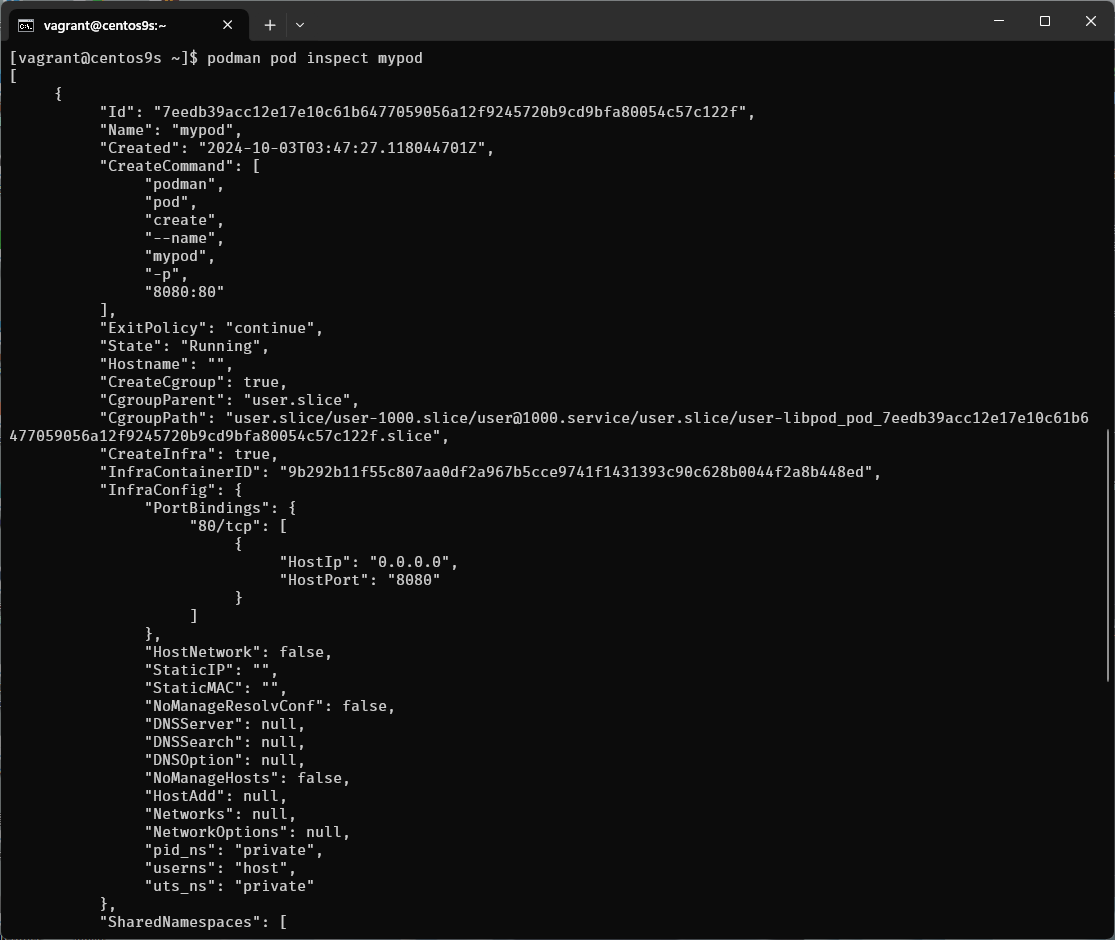
$ curl http://localhost:8080
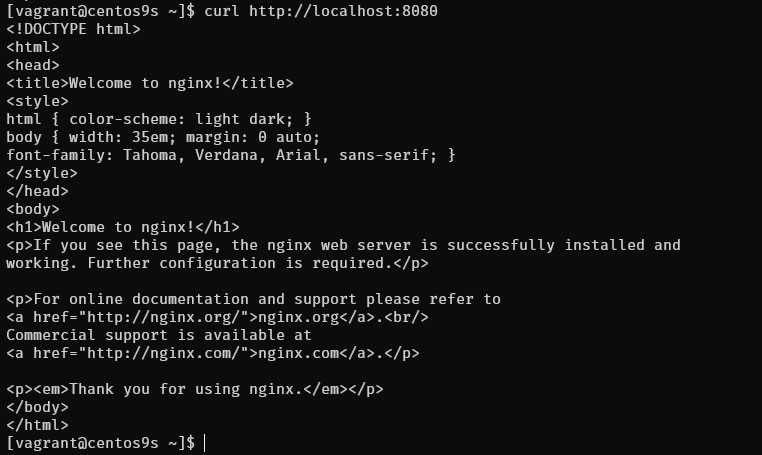
open browser
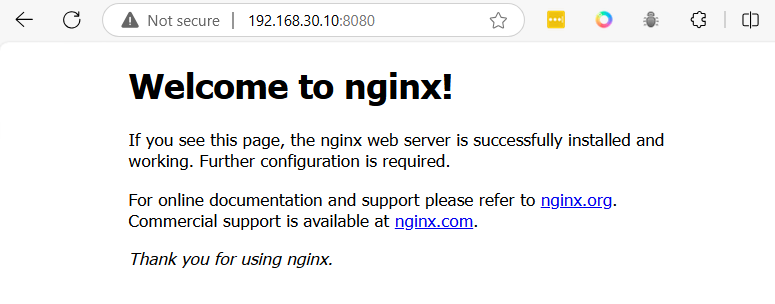
Test redis
$ sudo dnf install redis
$ redis-cli -h 127.0.0.1 -p 6379
127.0.0.1:6379> ping
PONG
127.0.0.1:6379>
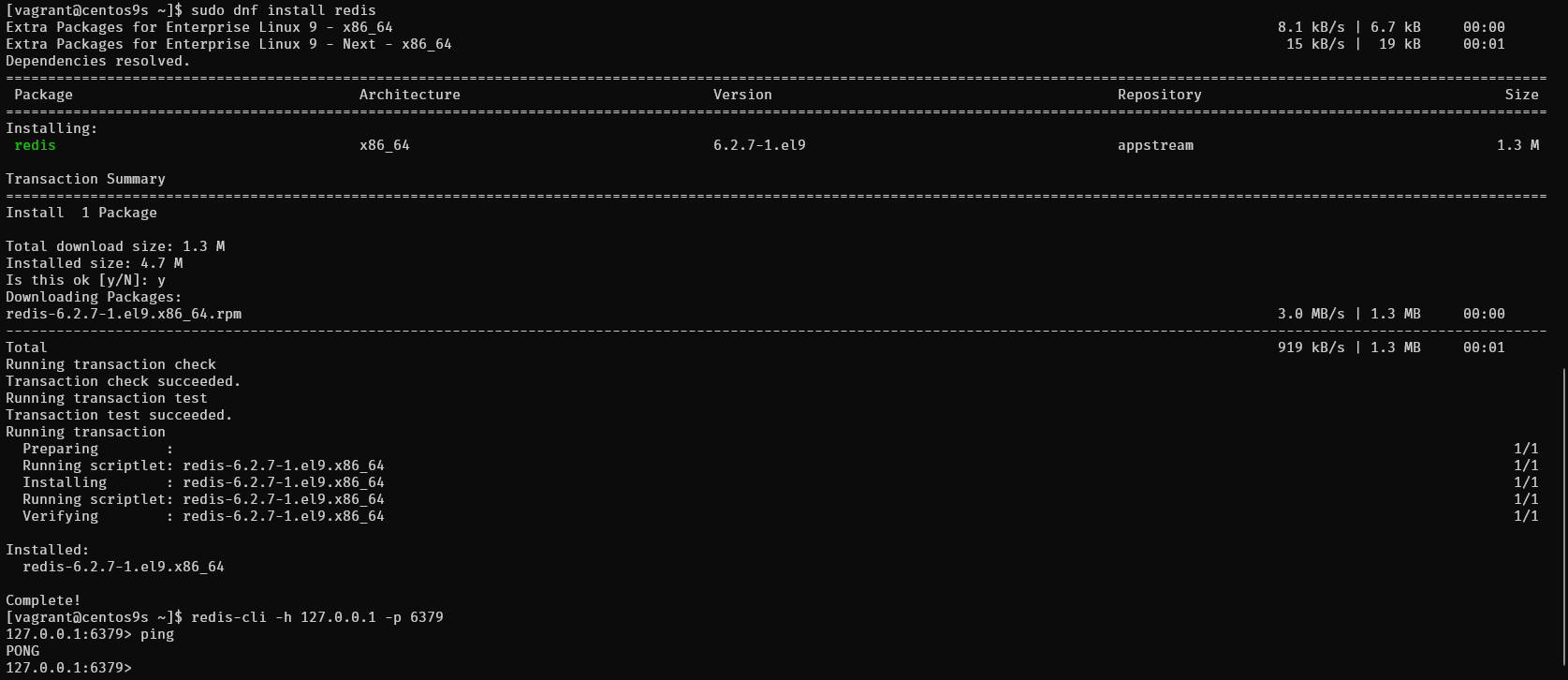
4. Managing Containers in a Pod
You can stop, start, or remove containers individually or manage the entire pod
4.1. Stopping a Pod
To stop the entire pod (and all containers within it):
podman pod stop mypod
4.2. Starting a Pod
To start the pod again:
podman pod start mypod
4.3 Removing a Pod
To remove the pod and its containers:
podman pod rm -f mypod